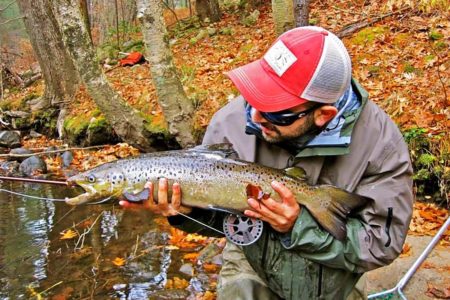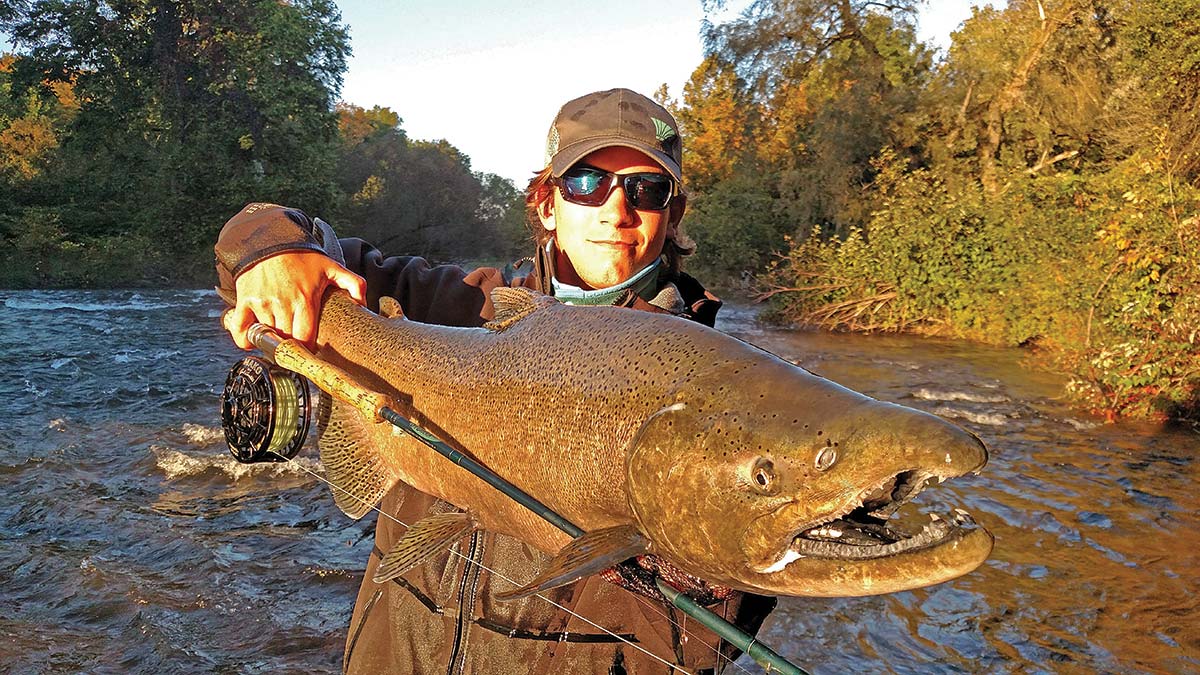
A legendary fishing destination is a relatively short road trip for most Fisherman readers.
I have been fly fishing the Salmon River in Pulaski, NY during the annual salmon run since the mid 80’s and for good reason. During this run it is the one place that a fly fisherman can go to catch very large trophy fish. A place where your long rod skills will be tested to the max, where your rod will pretzel over to its breaking point, and a place that will give you memories for a lifetime. This is a place every angler should experience at least once in their life, and once you do I’m pretty sure that you will be going back.
My fascination with this fishery began back in 1986 when I made my first journey to this picturesque part of the country and was amazed at what I saw. There in front of me were 20- to 30-pound king salmon swimming right on by. And at other times what seemed like a river with no fish in it suddenly hundreds of salmon would appear out of nowhere and run up the river. As far as the eye could see every angler would be hooked up and mayhem would prevail.
Thanks to the prolific stocking program that New York’s Department of Environmental Conservation (NYDEC) has undertaken in the past several decades this fishery presents world class opportunities for anglers. From September into October not only are there opportunities to catch king salmon but you can also hook into coho salmon, big brown trout, and near the end of the month steelhead. Catching any of these three fish is considered a prized catch.
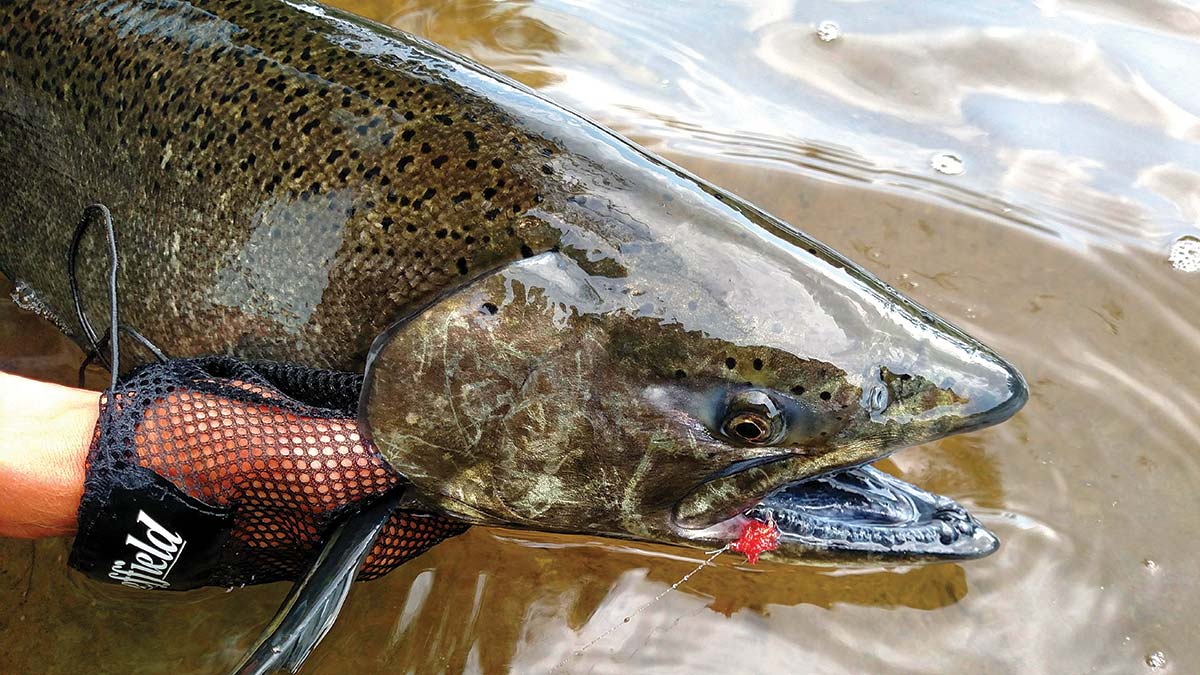
The Fall Run
As nights start to cool and water temperatures drop king salmon will begin to run the river at the end of August. Heavy rains with their associated runoff with pull fish in from Lake Ontario that stage at its mouth. This season the first salmon in the river was caught on August 28. The number of fish will increase greatly through September and peak about the first week of October when the greatest number of fish will be distributed throughout this 13-mile long river from top to bottom.
As I look back over my logs it is usually around September 15 that the first big wave of salmon enter the river. But this will vary from year to year. These will be some of the biggest and freshest fish of the entire run. These salmon can reach 30 pounds and are mean and green. These salmon are the most challenging to catch on the fly rod especially when you are fishing a 10-weight rod with 10- to 12-pound fluorocarbon leaders.
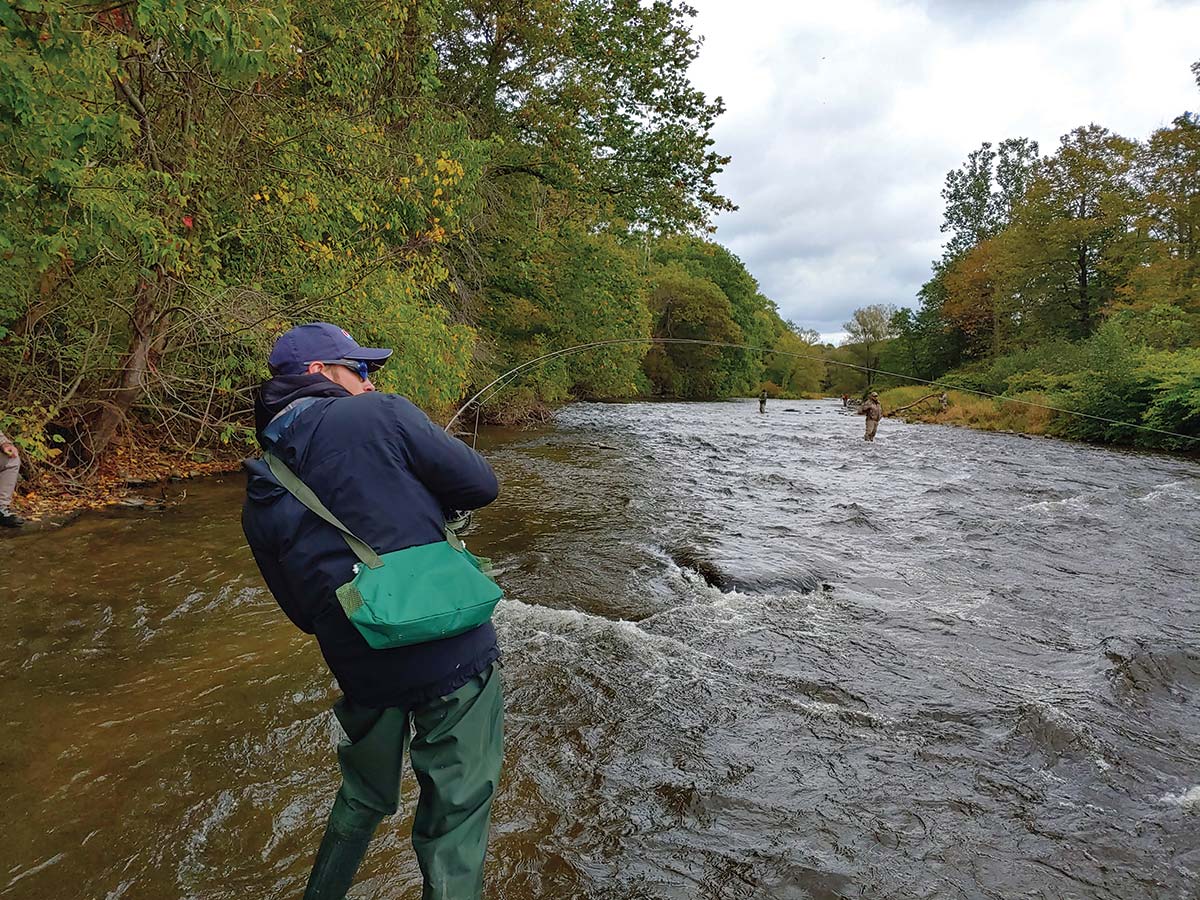
To intercept the freshest salmon you will want to fish the DSR, the Douglaston Salmon Run, (www.douglastonsalmonrun.com). This location is a pay to fish, 2-1/2-mile stretch of river, where the salmon enter the river from the estuary in Port Ontario. Here you will legitimately hook salmon in the mouth with your fly as they snap at it out of aggression. As the salmon move upriver to their spawning beds, they become more lethargic and darker in color. Their life cycle is coming to an end as they will spawn and die. Therefore their meat is not as fresh either. If you want to take salmon home to eat, catching them in the DSR would be your best bet.
The aggression strike of a salmon is very distinct. You will know for sure that you have the salmon hooked in the mouth as you will feel its head shake vigorously as it runs up or down the river. If you snag the fish with your fly it will take to the air thrashing about in an aerial display. This will be particularly true if the hook hits home on the underside or ventral surface of the fish. These fish need to be broken off immediately according to NYDEC regulations.
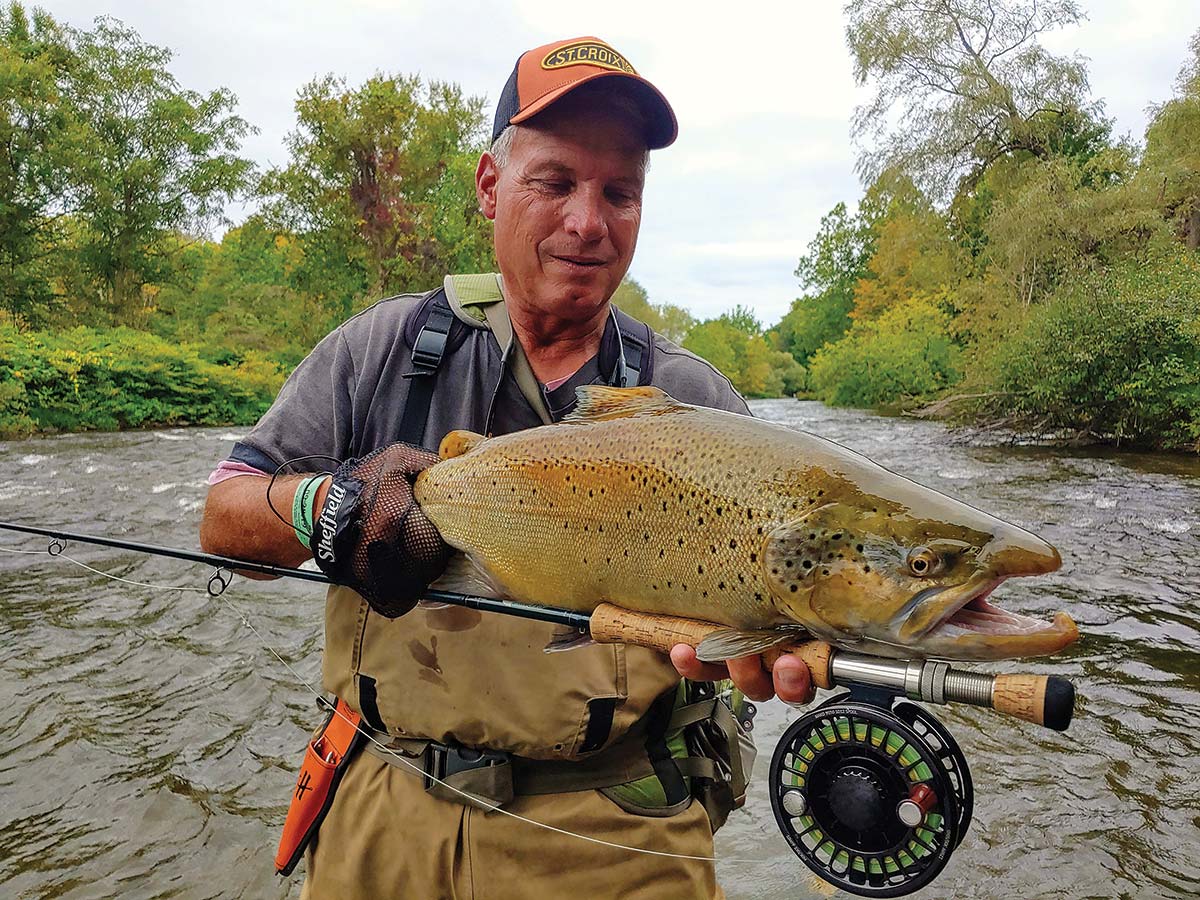
There are a couple of theories as to why the salmon who are not feeding during their spawning run will strike out at your fly. One is that it’s the innate nature of this species to protect their spawning beds. As a fly drifts by it is likely perceived as an intruder that is looking for an easy meal of fresh salmon eggs. The aggression strike is the king’s response to defend its bed. A second theory is that your fly imitates salmon eggs that have been dislodged from their beds and drifted downstream. To cover up where these upriver beds may be located, salmon lying downstream will crush these eggs as they drift back in the river current. Therefore, no trail is left to lead predators to the spawning beds.
Gearing Up
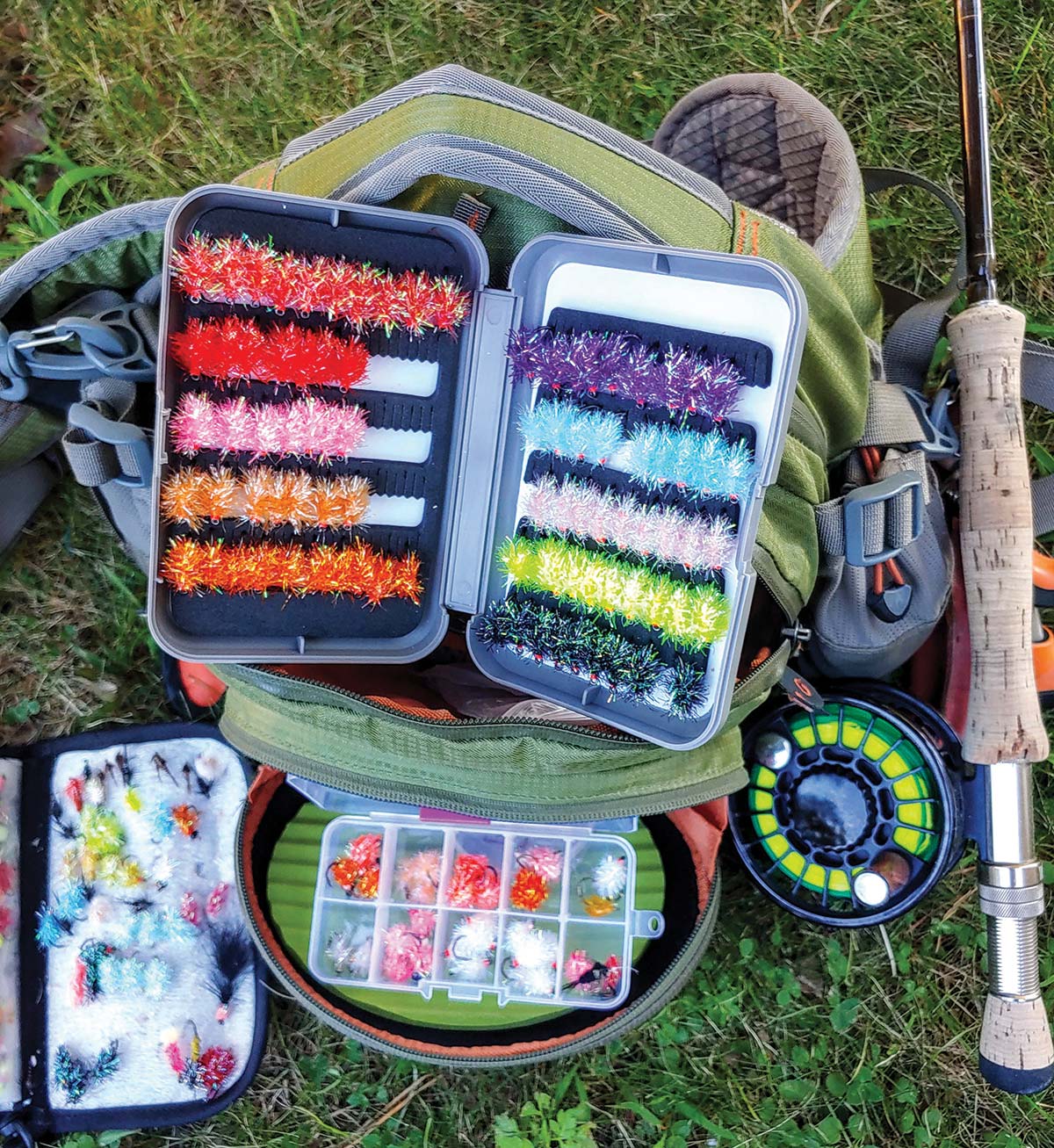
As far as fly tackle, you can fish with 10- to 12-weight rods. A high quality 10-weight rod will allow you to land fish and be easier on your arm when casting all day. However, to up my odds in landing a fish to take home for a meal I will size up to my St Croix 9-foot 12-weight fast action rod. This rod has a beefier butt so you can generate more power and leverage to subdue a big king but it still only weighs 5.4 ounces. This 12-weight is also a single grip so it casts like a much lighter 10-weight rod. For reels, it is best to have a high-end large arbor disc drag reel for handling the reel burning runs that you will encounter. These reels will also give you more spool diameter to gain back the maximum amount of line per wind when a king can quickly get 50 yards away from you.
Back in the 80s I was taught to fly fish the river by world record holder Gary Edwards who holds the 2-pound test tippet record with a 22-pound, 9-ounce king salmon. He was also the owner of the Wild River Inn, a place where my Salmon River memories began. Gary showed me a simple but very effective way to convert my saltwater fly outfits to fish the river. It was the lobbing lead method known in some circles as chuck and duck. Now this is not what a purist fly angler would consider fly fishing but it is highly effective and will put a trophy fish on the end of your fly rod.
In order to convert your saltwater setup for lobbing lead do the following. First remove your saltwater line from the reel leaving your backing in place. Then connect an .028-diameter intermediate running line to the backing. At the running line terminal end, loop a 12-inch section of 25-pound fluorescent orange amnesia. This will act as an indicator that will be easily visible. To this loop add a 6-foot section of 15-pound test monofilament. Tie this to a small barrel swivel leaving a 4-inch tag end to attached split shot. Attach 10- to 12-pound fluorocarbon leader to the other end of the barrel swivel and attach your fly. Your leader according to NYDEC regulations cannot exceed 4 feet as the distance between your fly and added weight.
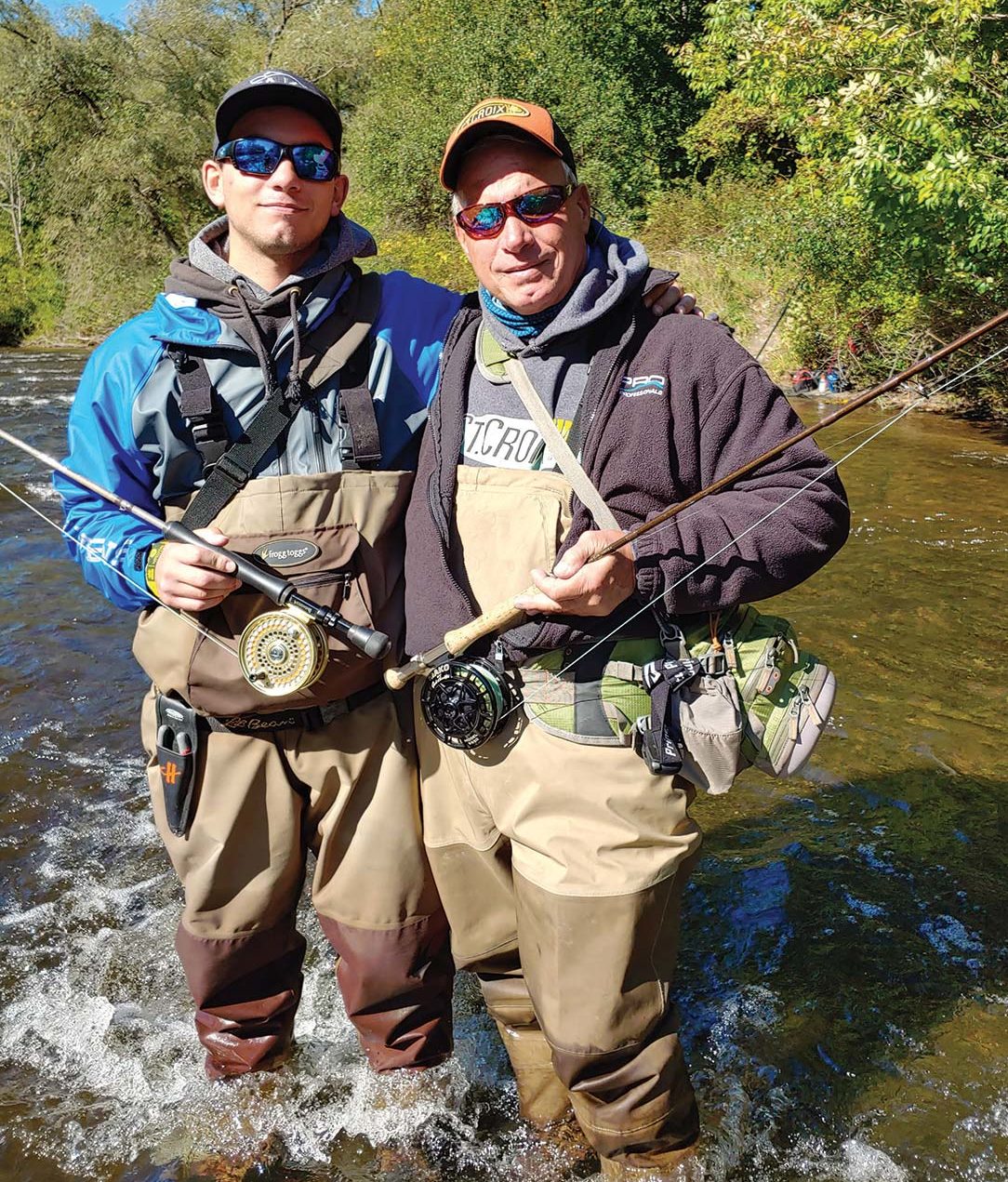
Since my first trips there in the 1980’s, I now head up to the Salmon River three weekends in a row. These are the last two weekends in September and the first weekend in October. What makes it so special for me however is my son Tommy accompanies me now. I started taking Tommy with me when he was 8 and now he is 19. It’s our father and son time to get away and spend quality time together. The memories we have created together while fishing are those life moments that are truly cherished.
– J. Freda
You need to make sure that you have enough split shot attached so that you will bounce and stay in contact with the bottom. Expect to get snagged and if you’re not then you are not deep enough. Cast slightly upriver allowing your spilt shot and fly to sink to the bottom. At the same time, throw a couple of mends to keep the line from getting ahead of the fly and creating unnatural drag on your offering. Again, remember if the fly is too high in the water column it will not draw a strike. It will need to drift right in front of the salmon’s mouth.
When you hook up the fight will be exhilarating. After the salmon’s initial run it’s important to try to control the fish’s head by using side pressure while employing a deep bend in your rod. When it settles in a hole you will need to pull it out while slowing dropping it back to the net man that should position himself downriver. It is best to walk towards the bank while doing this. If the salmon gets downriver and into some rapids you can try to chase it down to the next hole or break it off, if it doesn’t break off by itself.
For flies, there are many different flies that will work and the locals always have their hidden gems but I keep it simple and usually use size 6 or 8 estaz flies with or without a beadhead. What I find fascinating is that certain colors will work better than others on any given day or any time of day. For this reason I am stocked up with a wide variety of colors which includes orange, blue, pink, red, white, black, and purple. Olive or black egg sucking leeches tied on long shank size 4 Tiemco hooks are also good to have along.
